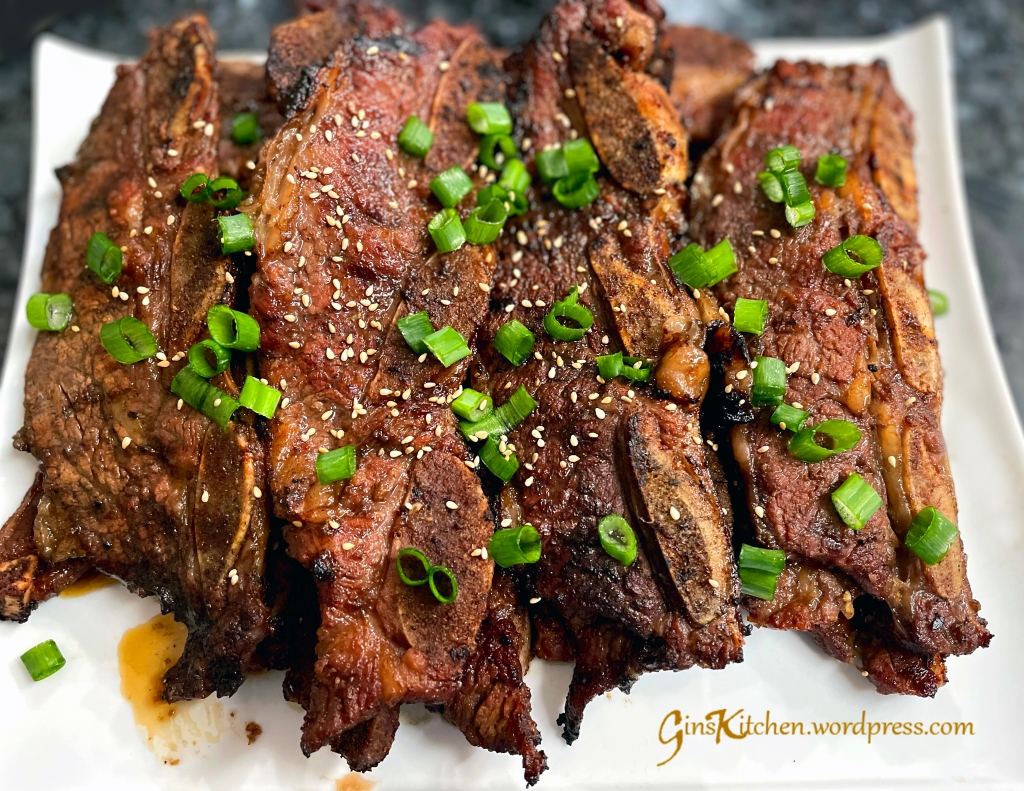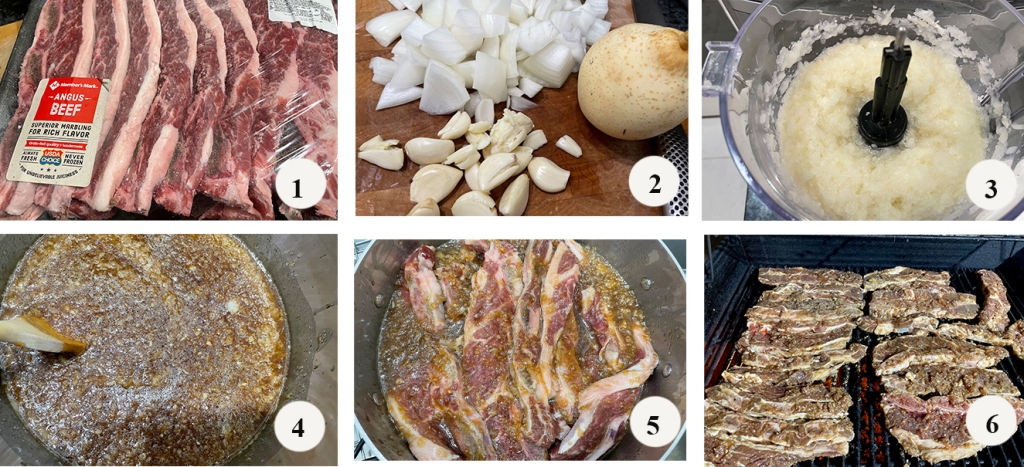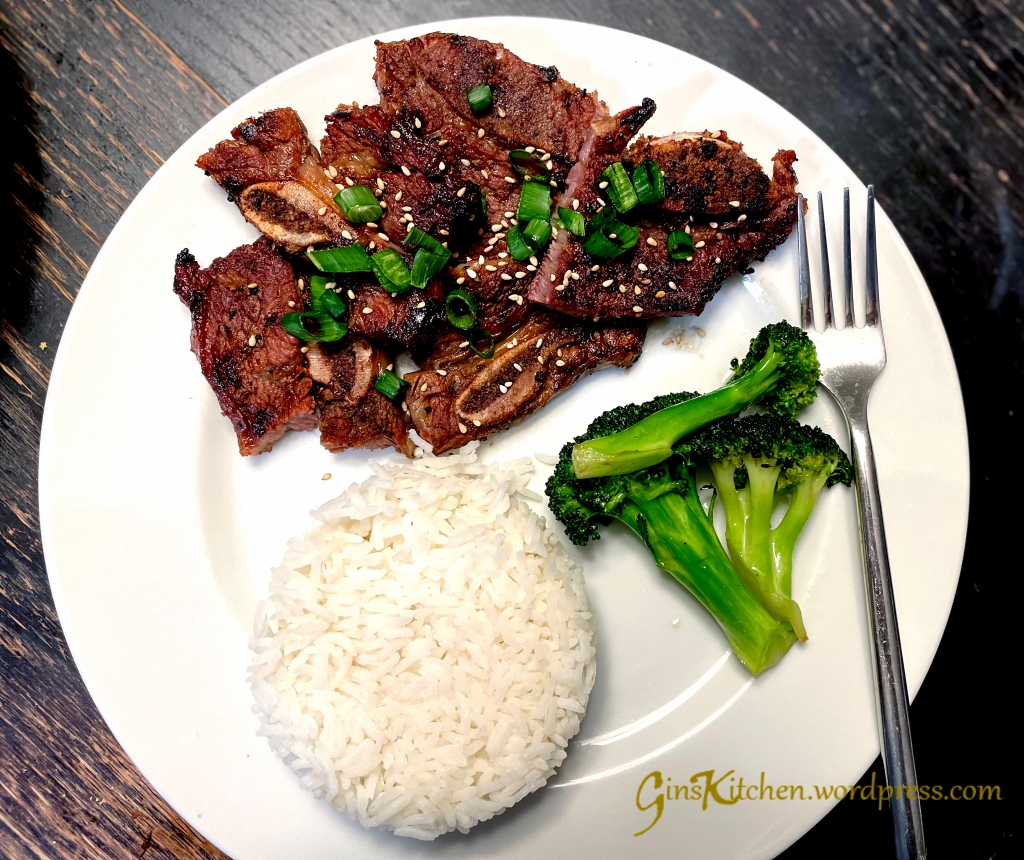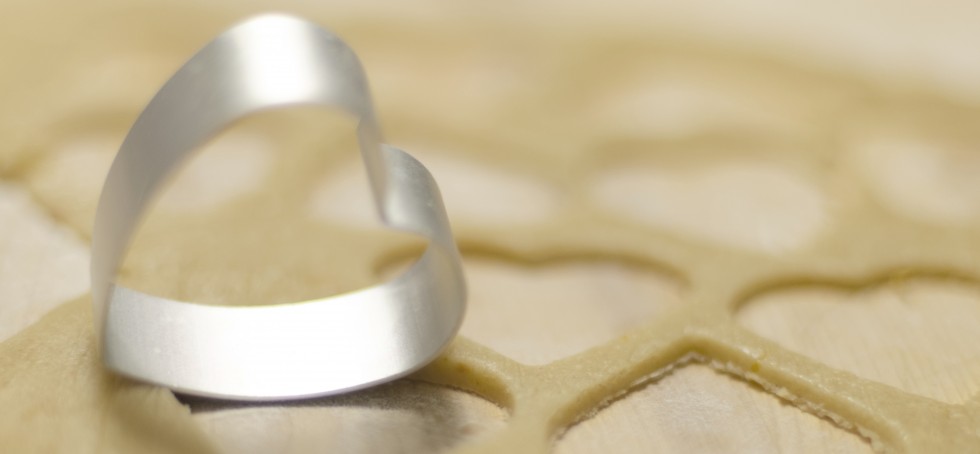
As mentioned in my previous post, Galbi (also called Kalbi) is my family’s favorite Korean dish. Our go-to Korean restaurant is A Ri Rang Tofu House in San Gabriel, CA. They serve delicious dishes, amazing tofu soup as well as their free side dishes (banchan) which can be refilled upon request.
Since inflation in 2022 has gone up a lot, restaurants have to cover the cost by increasing the price or reducing the portion of the dish. The Galbi combination – meat + soup is $33 (used to be $10 cheaper) plus tip for dinner. This is the main reason why I had to learn to cook it myself.
Ingredients:
| 18 / approx 8 pounds | Beef short ribs |
| 1 1/2 cup | Light soy sauce |
| 1 1/4 Cup | Brown sugar |
| 1 Cup | Water |
| 1 | Asian Pear (Ya Li) (blend) |
| 1 1/2 | Onion (blend) |
| 2 heads | Garlic (blend) |
| 6 Tbsp | Sesame oil |
| 1.5 Tbsp | Ground pepper |
| 1.5 Tbsp | Freshly grated ginger |
Directions:
- Please refer to picture 1 for the beef ribs, you can find them at the market. Rinse ribs under running water to wash off any bone bits that may exist. Pat dry and set aside.
- Peel and core the pear, chop into pieces. Peel the garlic and chop onion, puree all 3 ingredients in a blender until smooth. (Pictures 2-3)
- In a large mixing bowl, combine all ingredients, mix until all combined. (Picture 4)
- Add beef ribs into the mixing bowl, mix everything so each piece is evenly coated. Marinate overnight. (Picture 5)
- Remove beef ribs from marinade and wipe off excess. Place directly over the hot side of the grill. Cook, turning occasionally, until beef is cooked and lightly charred on both sides, 6 to 8 minutes total (3 to 4 minutes per side). Transfer to a serving platter and allow to rest for 5 minutes before serving. (Picture 6)
- Sprinkle toasted sesame and fresh green onion for garnish.















